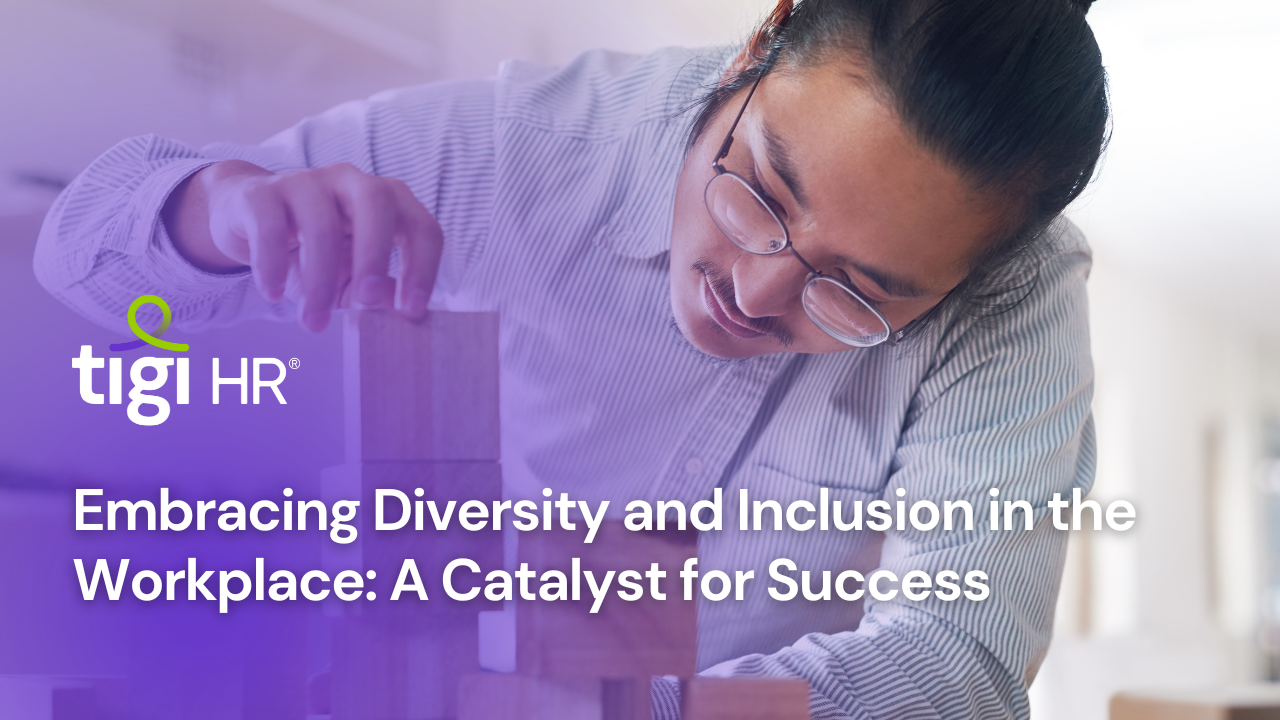In an era defined by global connectivity and cultural diversity, the significance of fostering an inclusive workplace cannot be overstated. Diversity and inclusion (D&I) are not just buzzwords; they are the cornerstones of a progressive, innovative, and harmonious work environment. This article delves into the compelling reasons why diversity and inclusion matter in the workplace, backed by authentic statistics and insights that underscore the transformative power of embracing differences.
Defining Diversity and Inclusion: Beyond the Buzzwords
1. Diversity: The Tapestry of Differences
Diversity encompasses the myriad of visible and invisible differences that make individuals unique. These differences include but are not limited to race, gender, age, ethnicity, sexual orientation, disabilities, and socioeconomic status. A diverse workplace is one that recognizes, respects, and values these distinctions, creating an environment where everyone feels seen and heard.
Insight: According to a McKinsey report, companies in the top quartile for ethnic and cultural diversity on executive teams are 33% more likely to have industry-leading profitability.
2. Inclusion: Fostering Belonging and Equity
While diversity is about representation, inclusion is about creating a sense of belonging and ensuring equal opportunities for everyone. An inclusive workplace actively seeks to involve all employees, irrespective of their backgrounds, in decision-making processes, and fosters a culture where diverse perspectives are not just welcomed but celebrated.
Statistics: The Harvard Business Review found that teams with inclusive cultures make decisions twice as fast with half the meetings.
The Business Case for Diversity and Inclusion
1. Driving Innovation and Creativity
A diverse and inclusive workforce acts as a catalyst for innovation. When individuals from different backgrounds collaborate, a rich tapestry of ideas emerges. Diverse teams bring varied perspectives, challenging the status quo and sparking creative solutions to complex problems.
Insight: Boston Consulting Group (BCG) reports that companies with diverse management teams have 19% higher revenue due to innovation.
2. Attracting and Retaining Top Talent
In a competitive job market, talented individuals are drawn to organizations that prioritize diversity and inclusion. Beyond recruitment, fostering an inclusive environment is essential for retaining employees. When individuals feel valued and respected, they are more likely to stay with the company.
Statistics: Glassdoor states that 76% of job seekers consider a diverse workforce an important factor when evaluating companies and job offers.
3. Enhancing Employee Performance and Productivity
Inclusive workplaces create a conducive atmosphere for employees to perform at their best. When individuals feel comfortable being themselves at work, they are more engaged, motivated, and, consequently, more productive.
Insight: A study by Deloitte found that inclusive teams outperform their peers by 80% in team-based assessments.
4. Meeting Customer Needs Effectively
Diversity in the workplace is reflective of the diverse markets companies serve. An inclusive workforce is better equipped to understand and meet the needs of a diverse customer base, thereby enhancing customer satisfaction and loyalty.
Statistics: A survey by Forbes Insights revealed that 56% of executives believe that diversity helps drive innovation and creativity in meeting customer needs.
Challenges and Solutions in Implementing Diversity and Inclusion
1. Unconscious Bias: Identifying and Overcoming Prejudices
Unconscious biases can impede the effectiveness of diversity and inclusion initiatives. Acknowledging these biases and implementing training programs to address them is crucial in creating an inclusive culture.
Insight: According to a report by the World Economic Forum, unconscious bias training has been found to be effective in promoting diversity.
2. Inclusive Leadership: Leading by Example
Leaders play a pivotal role in setting the tone for an inclusive workplace. Organizations should invest in developing inclusive leadership qualities that encourage openness, collaboration, and a commitment to diversity.
Statistics: A survey by Harvard Business Review found that 71% of employees believe that an inclusive leadership team is more likely to embrace diverse perspectives.
3. Diverse Recruitment Strategies: Beyond Traditional Channels
To build a diverse workforce, companies must rethink their recruitment strategies. This involves actively seeking candidates from a variety of sources, ensuring that the hiring process is free from biases, and providing equal opportunities to all applicants.
Insight: The National Bureau of Economic Research found that blind recruitment processes, where information about a candidate’s demographics is hidden, can help mitigate bias in hiring.
4. Continuous Learning and Adaptation
Diversity and inclusion are dynamic concepts that require ongoing commitment and adaptation. Organizations should foster a culture of continuous learning, where employees are encouraged to understand and embrace differences.
Statistics: A study by SHRM found that companies with inclusive learning cultures are 37% more productive.
Measuring the Impact of Diversity and Inclusion Initiatives
To assess the effectiveness of diversity and inclusion efforts, organizations should establish key metrics. These may include:
- Representation Metrics: Track the diversity of your workforce at different levels within the organization.
- Employee Engagement Metrics: Measure the sense of belonging and engagement among employees from diverse backgrounds.
- Promotion and Advancement Metrics: Assess the rates at which employees from diverse backgrounds are promoted and advance within the organization.
- Customer Satisfaction Metrics: Evaluate how diversity and inclusion initiatives impact customer satisfaction and loyalty.
Conclusion: Building a Future of Inclusivity
In conclusion, diversity and inclusion are not just ethical imperatives but strategic necessities. The business case for embracing diversity and inclusion in the workplace is compelling, with statistics and insights highlighting the profound impact on innovation, talent acquisition and retention, employee performance, and customer satisfaction. Overcoming challenges and implementing solutions requires a concerted effort from leadership and a commitment to continuous learning.
As organizations embark on this journey, they not only contribute to a more just and equitable society but also position themselves as leaders in their industries. The workplace of the future is one that recognizes and celebrates the unique strengths each individual brings, fostering a culture of inclusivity that propels both individuals and organizations toward unprecedented success.





